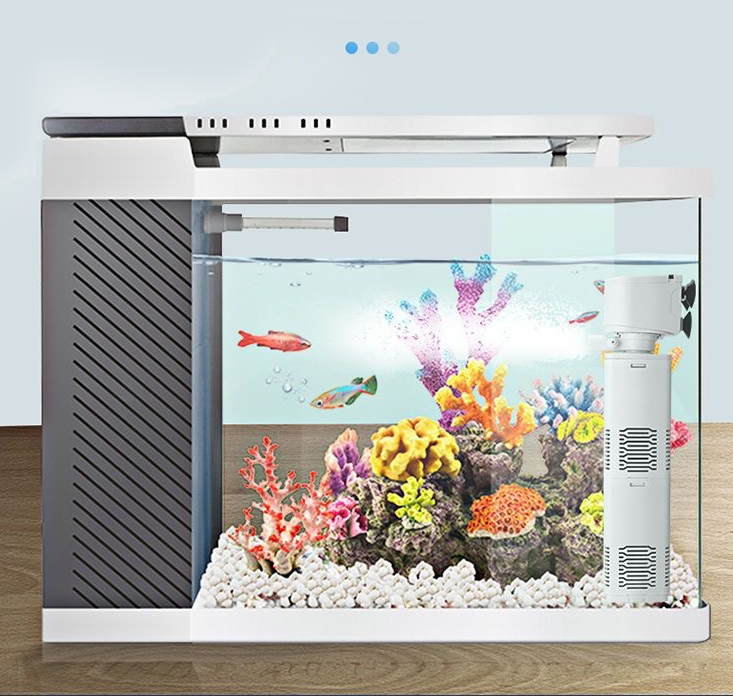Maintaining a clean and efficient aquarium filter is essential for the health and well-being of your aquatic pets. But how often should you clean your aquarium filter? The answer can vary depending on several factors, including the type of filter you have, the size of your aquarium, and the specific needs of your fish and plants.
In this article, we’ll explore the general guidelines for cleaning different types of aquarium filters and provide some tips to help you keep your aquarium environment in top condition.
Canister Filters
Canister filters are powerful and versatile, making them a popular choice for many aquarium enthusiasts. These filters typically have multiple stages of filtration, including mechanical, chemical, and biological components. For canister filters, it’s generally recommended to clean them every 4 to 6 weeks. However, this timeline can vary based on the filter’s workload and the specific conditions of your aquarium.
When cleaning a canister filter, it’s important to follow these steps:
1. Turn off the filter and disconnect it from the power source.
2. Remove the filter from the aquarium and disassemble it carefully.
3. Clean the mechanical filter media (such as sponges or foam) under running water. Be sure to use water that is the same temperature as your aquarium to avoid killing beneficial bacteria.
4. Replace the chemical filter media (like activated carbon) if it has been in use for more than a month.
5. Rinse the biological filter media (such as ceramic rings or bio balls) gently to remove any debris without disturbing the beneficial bacteria.
6. Reassemble the filter and reconnect it to the aquarium.
Hang-on-Back Filters
Hang-on-back (HOB) filters are another common type of aquarium filter. They are easy to install and maintain, making them a great option for many hobbyists. HOB filters should generally be cleaned every 2 to 4 weeks, depending on the size of your aquarium and the amount of waste produced by your fish.
To clean a hang-on-back filter:
1. Unplug the filter and remove it from the aquarium.
2. Take out the filter cartridge and rinse it under running water. If the cartridge is heavily clogged or has been in use for more than a month, it’s usually best to replace it.
3. Clean the impeller and other internal components to remove any debris.
4. Reinstall the filter and plug it back in.
Sponge Filters
Sponge filters are simple and effective, especially for small aquariums or those housing delicate fish. They primarily provide mechanical and biological filtration. Cleaning a sponge filter is relatively straightforward and should be done every 2 to 3 weeks.
Here’s how to clean a sponge filter:
1. Unplug the filter and remove it from the aquarium.
2.Rinse the sponge under aquarium water or dechlorinated tap water. Avoid using tap water directly from the faucet, as the chlorine can harm the beneficial bacteria on the sponge.
3. Gently squeeze the sponge to remove any trapped debris.
4. Reinstall the filter and plug it back in.
While the general guidelines provide a good starting point, there are several factors that can influence how often you need to clean your filter:
Aquarium Size and Stocking Level
Larger aquariums with fewer fish may require less frequent cleaning compared to smaller, heavily stocked tanks. The more waste your fish produce, the faster your filter will become clogged and less efficient.
Type of Fish and Plants
Some fish species produce more waste than others, which can affect filter cleaning frequency. Additionally, planted aquariums may benefit from slightly different cleaning schedules, as plants can help with natural filtration and reduce the overall workload on the filter.
Water Quality and Maintenance Routine
Regular water changes and good overall aquarium maintenance can help keep your filter running more efficiently. If you maintain excellent water quality through regular partial water changes and proper feeding practices, your filter may not need cleaning as often.
Tips for Effective Filter Maintenance
- Monitor Water Quality:Regularly test your aquarium water to check for ammonia, nitrite, and nitrate levels. Elevated levels can indicate that your filter is not functioning optimally and may need cleaning or adjustment.
- Inspect the Filter Regularly: Take a quick look at your filter during routine aquarium maintenance to spot any obvious signs of clogging or damage.
- Replace Filter Media as Needed: While some components of your filter can be cleaned and reused, others, like activated carbon or certain types of filter pads, will need to be replaced periodically to maintain effectiveness.
- Avoid Overcleaning: While it’s important to keep your filter clean, overcleaning can disrupt the beneficial bacteria that help maintain water quality. Always follow the manufacturer’s recommendations and be gentle when cleaning biological filter media.
Cleaning your aquarium filter is a vital part of maintaining a healthy and thriving aquatic environment. By understanding the general cleaning guidelines for different types of filters and considering the specific needs of your aquarium, you can ensure that your filter continues to provide effective filtration. Regular maintenance, combined with good overall aquarium care, will help keep your fish happy and your water crystal clear.
If you want to learn more about this, please contact our website https://www.jingyeaquarium.com/.
Post time: Apr-17-2025

